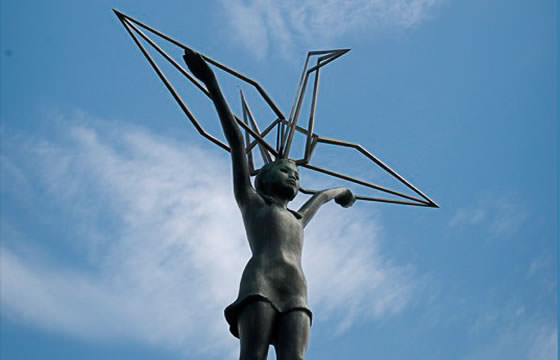 It is unfortunate that we are still listening and looking at the violence of war between some nations today. It might be well then to heed some thoughts from Pope Francis himself, who says 'a true builder of peace is one who takes the first step of goodwill toward the other. This is not a show of weakness, but is one of strength; the strength of peace with each other.'
It is unfortunate that we are still listening and looking at the violence of war between some nations today. It might be well then to heed some thoughts from Pope Francis himself, who says 'a true builder of peace is one who takes the first step of goodwill toward the other. This is not a show of weakness, but is one of strength; the strength of peace with each other.'
Indeed peace itself is a gift of the Great Creator of all things. In the Gospel of Luke, words of peace were spoken by the angels when appearing at the birth of Jesus. Suddenly angels appeared praising God and saying. 'Glory to God in the highest peace on earth for God is blessing humankind.' We can only find this peace in the face and heart of Jesus the Son of God, who offered Himself as a witness to how we can find this kind of peace. He came to break down the walls of hatred and violence that divide us.
To be able to find this peace, we must reflect and cultivate a deep sense of respect for life and harmony within ourselves, but we often still despair, and often doubt, that the peace Jesus offered does not really happen in today's world. The following children's story illustrates the terrible futility of wars and the horrors it brings to all humanity across the world.
Two year old Sadako, a little Japanese girl, was at home with her mother when she was blown out of the window as a result of the atomic bombing of Hiroshima. Her mother ran to find her, thinking she was dead, but she was alive and caught in the black rain, the effects of the bomb. Sadako grew up becoming a great runner for her school.
Then, in November 1954, Sadako developed swellings on her neck and behind her ears. In 1955 Sadako was admitted to the Red Cross hospital, for blood transfusions her blood count was six times higher than the normal child. Then her condition drastically worsened.
A room-mate at the hospital told her of the legend of the Paper cranes which promised that anyone who folds 1,000 cranes will have their favourite wish granted.
In a documentary film that was made of her life, her father said, 'Sadako only managed folding 644 which the family kept.' Then her classmates gathered paper for her and eventually completed the 1,000 cranes, which were buried with her. Sadako died in October 1955, at the age of twelve. After her death, the Atomic Bomb Casualty Commission researched her body for the effects of the atomic bomb on the human body.
In 1958 her school friends raised money for a statue to be placed in the Hiroshima Peace Park. It was of a young girl holding high a golden crane. At the foot of the statue it reads:
'This is our cry. This is our prayer. Peace in the World.'
In Japanese lore, the crane is held in the highest regard. It is a type of large migratory bird and was thought to live for a thousand years.
Sadako has become a symbol of the impact of modern nuclear warfare and is now a heroine for young people in Japanese schools.
War affects every nation across the world. In early 2017, Pope Francis appealed to all religious authorities to join in reaffirming unequivocally that one can never kill in God's name, saying 'the world is dealing with homicidal madness which misuses God's name in order to disseminate death, in a play for domination and power.'
Pope Francis also gave an address to the Diplomatic Corps accredited to the Holy See. 'Fundamentalist terrorism is the fruit of a profound spiritual poverty, and is often linked to significant social poverty'. The Pope said that its threat to peace 'can only be fully defeated with the joint contribution of religious and political leaders.'
Sadako's is a sad but beautiful story. If only we could listen, learn and pray more strongly for hope and peace amongst our world's leaders. More prayer is our hope!
Click here to read the story.